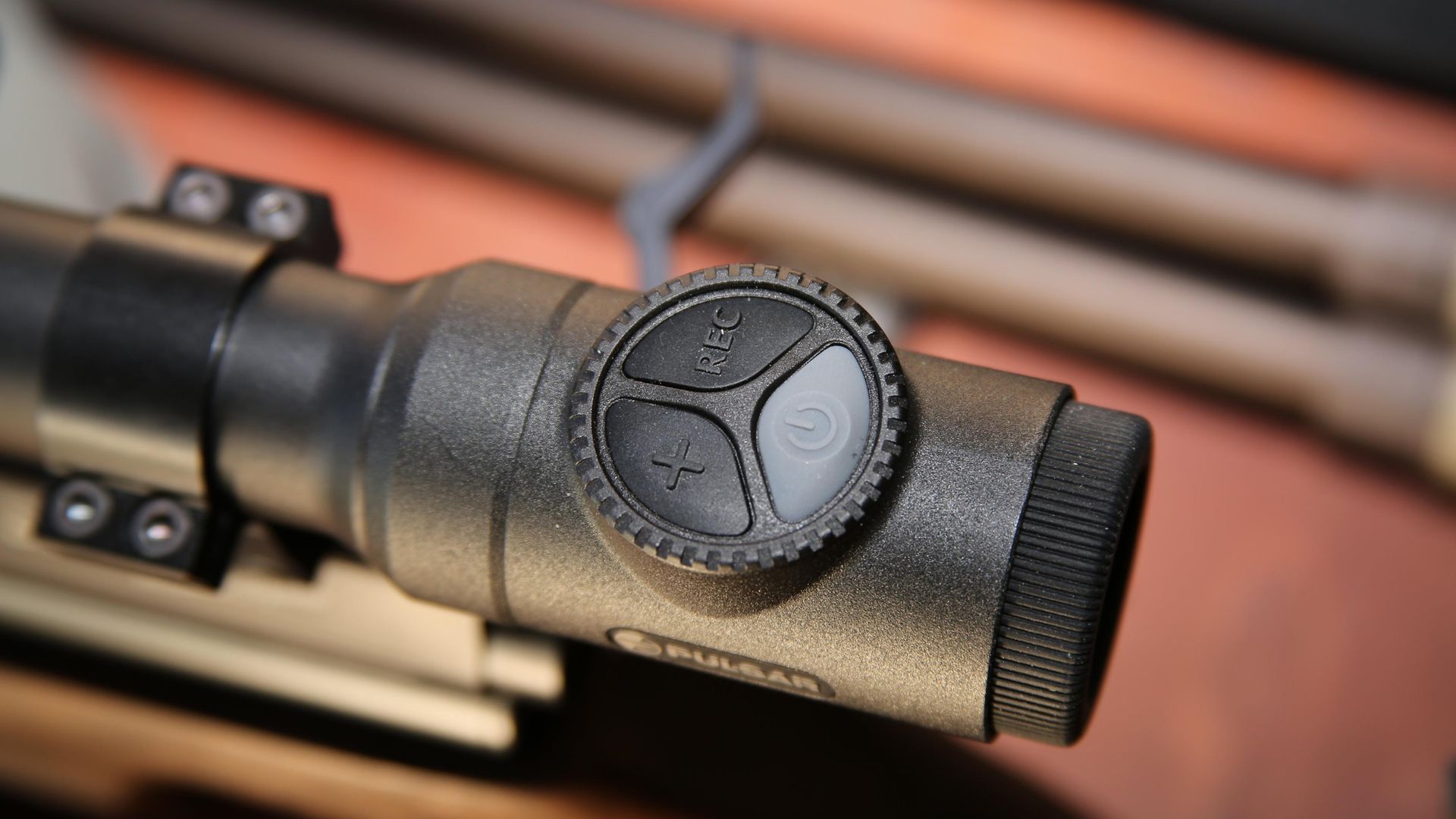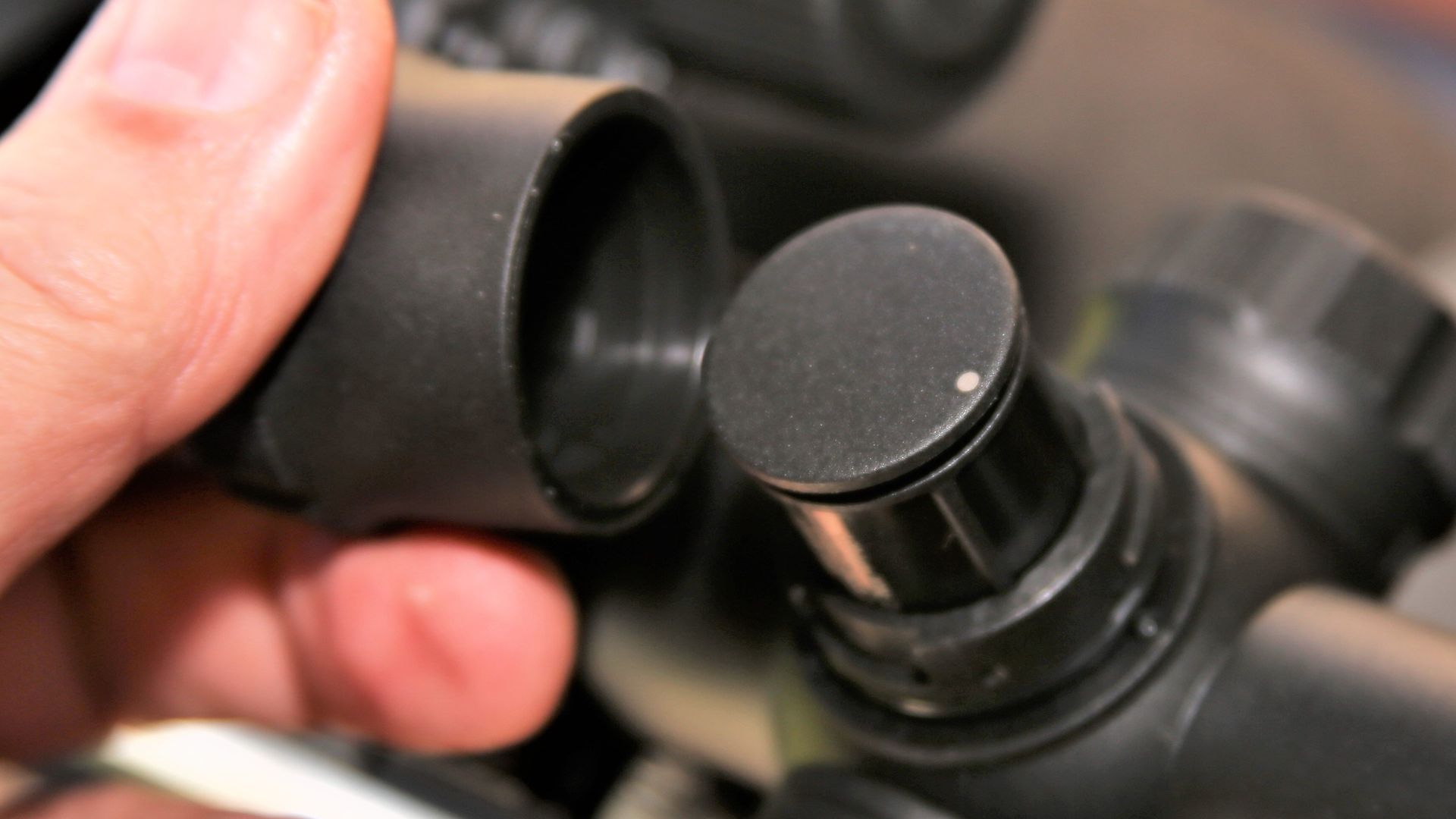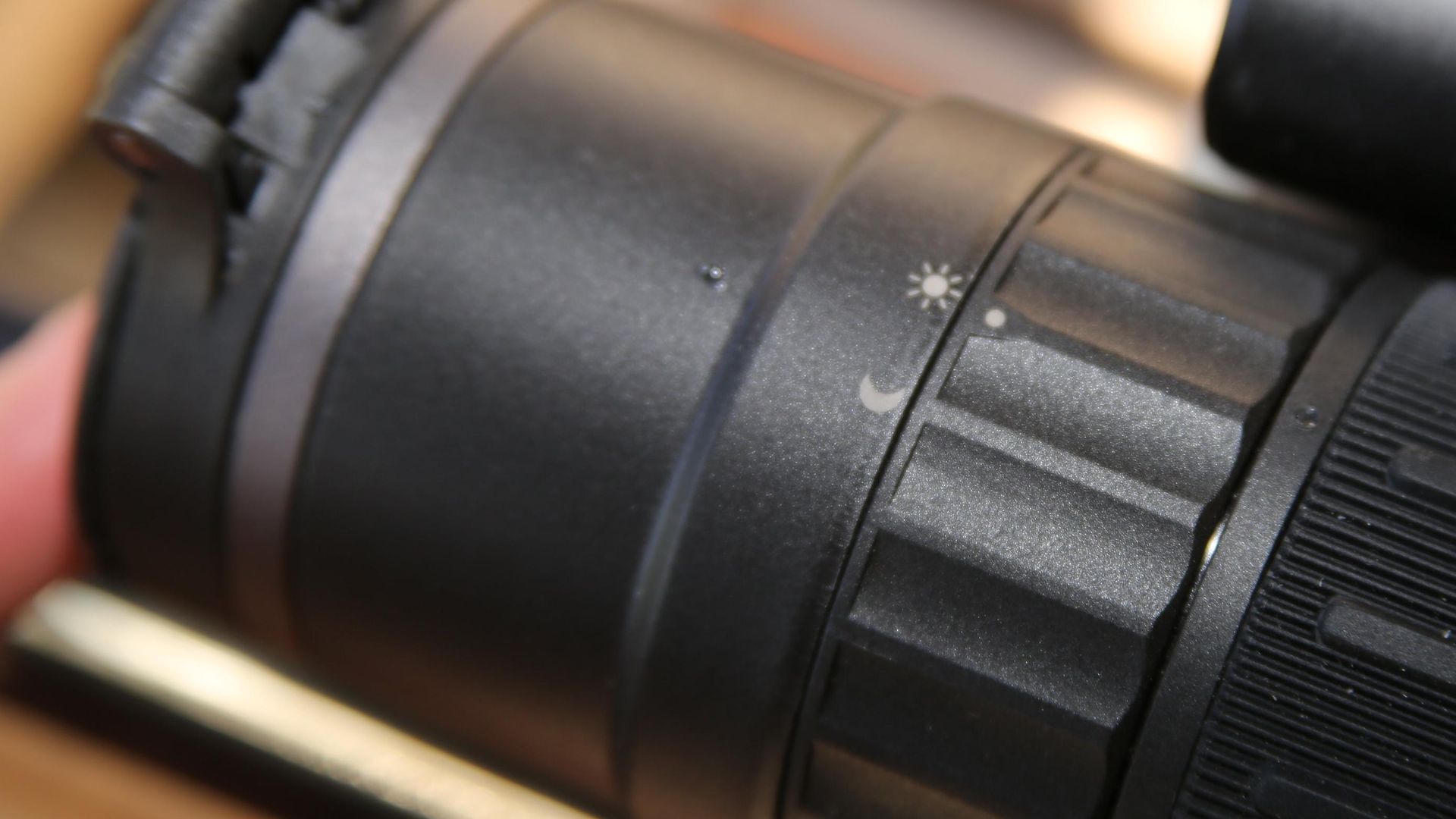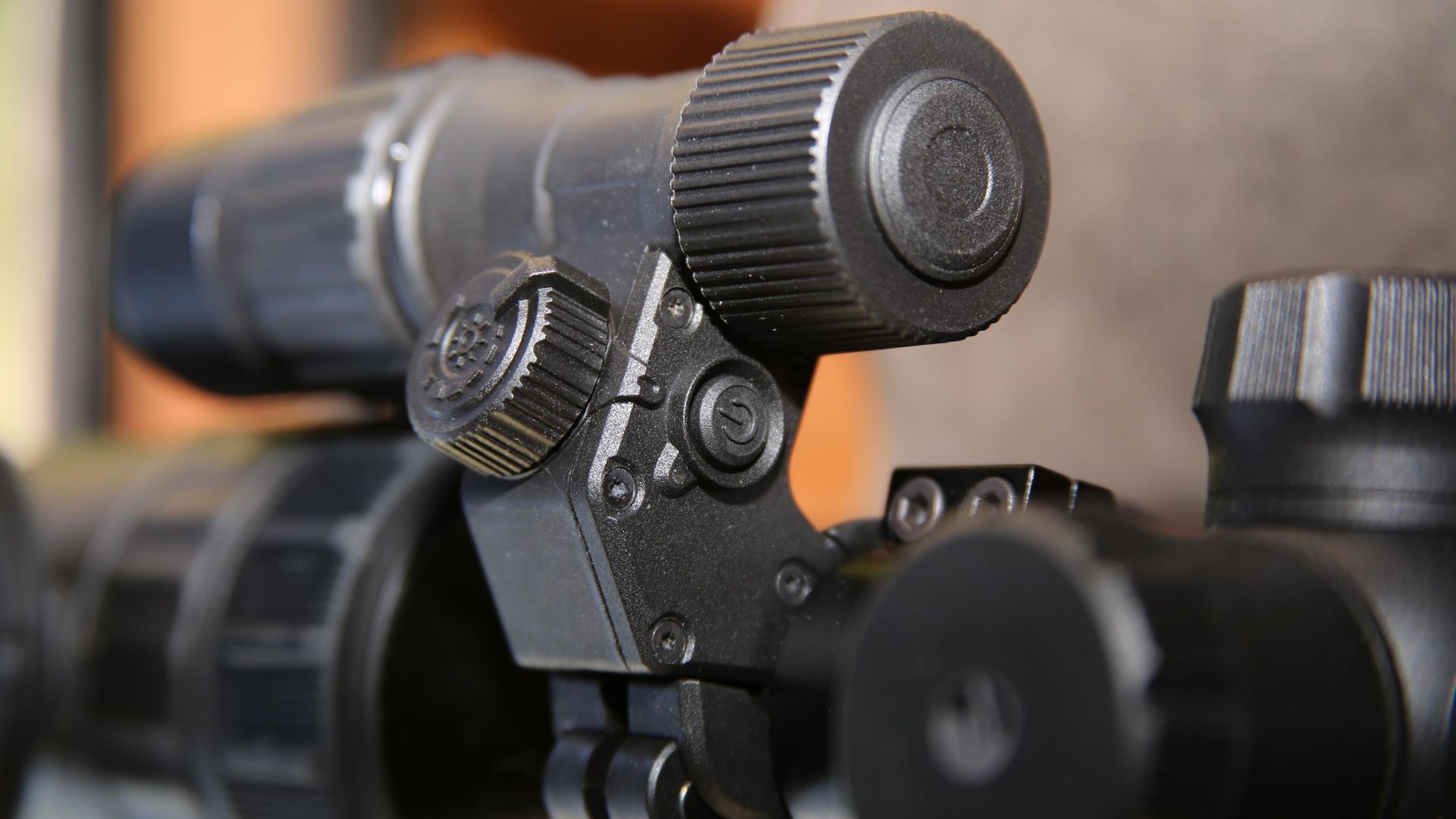Terry Doe reviews the Pulsar Digex C50 night vision scope he has been using on his air rifle for hunting
Regular readers, and viewers of our splendid Shooting & Country TV channel, will know that, over the past year or so, I’ve ventured into the world of using hi-tech hunting optics. Overall, it’s been a complete, and literal, eye-opener for me, and, again literally, it’s changed my approach to hunting forever. After a lifetime of hunting with air rifles, that’s quite a statement, but it contains not a word of exaggeration.
More importantly, for a simple soul like me at least, I’ve conducted my assessment of this ‘new’ hardware from an entirely practical perspective. I haven’t diverted my attention to refresh rates, modulated transfer function, scintillation, or even signal-to-noise ratios. I know the more ‘intensively inclined’ out there will crave information on these absolute essentials, but trust me, you’ll never get them from me. I don’t really know how my television works; I just watch it and let others handle the techno stuff. I suspect I’m by no means alone in this.
 credit: Archant
credit: Archant
THE PULSAR DIGEX C50
On the subject of televisions, my latest item of hi-tech hunting-ware is the Pulsar Digex C50, which has been providing a window on my preferred world for the past month or so. It’s a day/night optic, with a 30mm body, digital zoom magnification from 3.3 to 14X, and conventional riflescope styling. This model comes with an X850 S variable-intensity infra-red illuminator – the C50 is available without the illuminator - which like the C50 itself, is powered by rechargeable batteries.
There are two batteries in the scope and one in the illuminator, and so far I haven’t been able to run these out during any single hunting trip. I’m reliably informed that, from a full charge, the illuminator and the C50 are good for a full 10 hours. Run-time will vary, of course, depending on how long you keep each unit switched on, but my own explorations show that four hours in the field dropped the C50’s charge to just under 50%, and the illuminator was still going strong.
 credit: Archant
credit: Archant
PREPARATION
To charge the C50, simply plug it into the mains, using the lead provided. The scope’s onboard APS3, 4.9ah battery is first to be charged, followed by the removeable APS 2, 2ah battery. These batteries are used by the C50 in the reverse of their charging order. There’s also a separate charging unit that will charge both removeable APS2 batteries at once. All in all, the Digex C50’s power system is simple and efficient.
On to more familiar matters, and the Digex C50 is fixed to the rifle with standard 30mm scope mounts. I’d suggest a set of sturdy two-piece mounts, to make the support points as wide as possible, but this C50 unit has been tested with a variety of mounts, so I anticipate no problems here.
 credit: Archant
credit: Archant
SETTING IT UP
The Digex C50, like all of its modern kind, is menu-driven, and I know that those who are yet to try this type of hardware will already be curling a lip at the thought of any move away from clicking turrets. I was one of them, and I missed out. Don’t be the former me. Read on and discover, as I did, how easy it is to use something like a Pulsar Digex C50.
Everything you need to know to use this unit successfully is covered in the instructions, so I won’t explain it here. Basically, zeroing the Digex is a straightforward matter of shifting the image, and with it your pellet holes, to cover your aim point. That’s exactly what happens with all modern ‘image moving’ scopes, and the C50’s image is shifted with a turret, too. It’s perfectly simple, I assure you. There’s even more online, should you require it, but you don’t need computer skills to use this remarkable optic.
 credit: Archant
credit: Archant
WHAT DOES IT DO?
In daylight, the Pulsar C50 operates like any scope, offering a full colour, HD resolution sight picture overlaid with a reticle. In the Pulsar’s case, that reticle is a multiple-choice system that can be adapted to your preference and the conditions at the time, with no need to re-zero.
In darkness or low light, the C50’s night-vision mode comes into its own. Switch to this by rotating the unit’s large front collar to the ‘moon’ setting, switch on the supplied infrared illuminator, and carry on. The C50’s transition from daytime to night use takes around 10 seconds, including adjusting the intensity and direction of the illuminator. Again, it’s simplicity itself and the performance is spectacular.
The Digex C50 offers video and stills recording, plus live streaming capability via its built-in WiFi and the Stream Vision 2 app for iPhone and Android.
The unit is active just three seconds after the power button is pressed, plus it has an ‘instant restart’ function when in ‘sleep’ mode to save battery power.
The Digex C50 is fully weatherproof, and can even handle total submersion for up to 30 minutes, so there are no worries about the unit handling the demands of the hunting field.
Then there’s the sight’s ability to store multiple zero profiles, for use on different rifles, plus ‘one-shot’ zeroing – I needed five shots, but it’s still faster than a conventional scope, and there’s a range of image-enhancement options, which yet again, even a technophobe like me can handle without the slightest hint of one of my stress headaches.
 credit: Archant
credit: Archant
WHAT DOES IT COST?
The Digex C50 unit alone costs £1,099.95, and that rises to £1,239.95 with the X850S infra-red illuminator. The C50 comes with its required charging connectors, a real-speak instruction manual, and a proper zipped storage case.
Am I getting one? Of course I am. I’m like a kid in the best toy shop on this planet, and I can only urge you to join me.
ORDER FROM: Thomas Jacks Ltd